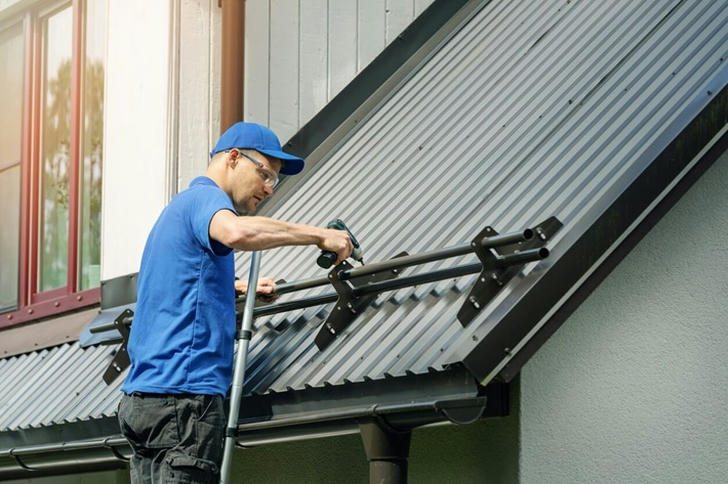Roof Replacement Guide: When, Why, and How to Do It Right
Roof Replacement Guide: When, Why, and How to Do It Right
Did you know that a poorly maintained roof can reduce your home's value by up to 10%? Or that over 70% of roof replacements in the U.S. are due to weather damage? If your roof is over 15 years old or showing signs of wear, you might be closer to a replacement than you think. But how do you know when it's time? And how do you ensure you're making the best investment?

Signs You Need a Roof Replacement
Not all roof problems require a full replacement, but some do. Here are key indicators that it might be time:
✅ Age of Your Roof – Asphalt shingles last 20–25 years; metal and tile roofs last longer. If yours is approaching this age, it's time for an inspection.
✅ Leaks and Water Damage – Stains on ceilings or walls? This could mean water is seeping through your roof.
✅ Missing or Curling Shingles – If shingles are cracked, curling, or missing, your roof's protective layer is compromised.
✅ Sagging Roof – A sagging roof could indicate structural damage, which is a serious issue that needs immediate attention.
✅ Increasing Energy Bills – A failing roof can lead to poor insulation, making your heating and cooling systems work harder.
Choosing the Right Roofing Material
Your choice of roofing material affects not just aesthetics but also longevity, cost, and maintenance. Here's a quick comparison:
| Material | Lifespan | Cost | Maintenance |
|---|---|---|---|
| Asphalt Shingles | 20–25 years | $$ | Low |
| Metal Roof | 40–70 years | $$$$ | Low |
| Clay Tiles | 50+ years | $$$$$ | Medium |
| Wood Shakes | 30–40 years | $$$ | High |
| Slate Roof | 75+ years | $$$$$ | Low |
💡 Pro Tip: If you're in an area prone to storms, impact-resistant shingles or metal roofing might save you money on insurance.
How Much Does a Roof Replacement Cost?
The average cost of a roof replacement in the U.S. ranges from $5,000 to $15,000, depending on size, materials, and labor. Here's a breakdown:
- Asphalt shingles: $4,000–$10,000
- Metal roofing: $8,000–$25,000
- Clay or concrete tiles: $12,000–$30,000
💰 Ways to Save:
- Get multiple quotes from reputable contractors
- Check for government rebates on energy-efficient materials
- Plan your replacement during the off-season (late winter or early spring)
Real Success Story: John's Roof Transformation
John M., a homeowner in Texas, faced a tough decision. His 20-year-old asphalt roof had sustained severe storm damage, causing leaks in his attic. A contractor quoted him $14,000 for a full replacement, which was out of his budget.
🔍 Solution: John compared multiple estimates, chose an energy-efficient metal roof, and applied for a local energy rebate, saving $3,500.
🏠 Result: His new roof increased his home's value by 8%, improved insulation, and reduced his energy bills by 15% annually.
👉 Lesson Learned: The right roofing choice can save you thousands in the long run!
DIY vs. Hiring a Professional
Can you replace your roof yourself? Technically, yes—but should you? Probably not. Here’s why:
| Factor | DIY | Professional |
|---|---|---|
| Cost Savings | ✅ | ❌ |
| Safety | ❌ | ✅ |
| Time Required | ❌ | ✅ |
| Warranty | ❌ | ✅ |
| Risk of Mistakes | ✅ | ❌ |
💡 Bottom Line: Unless you have roofing experience, hiring a licensed contractor is the safest and most cost-effective choice.
Final Thoughts
A roof replacement is a major investment, but choosing the right materials, contractor, and timing can save you money and increase your home's value. If your roof is showing signs of aging or damage, don’t wait until a small issue becomes a costly emergency.
For more information, check out these sources:
📌 Sources:
- National Roofing Contractors Association (NRCA) – www.nrca.net
- U.S. Department of Energy – www.energy.gov
